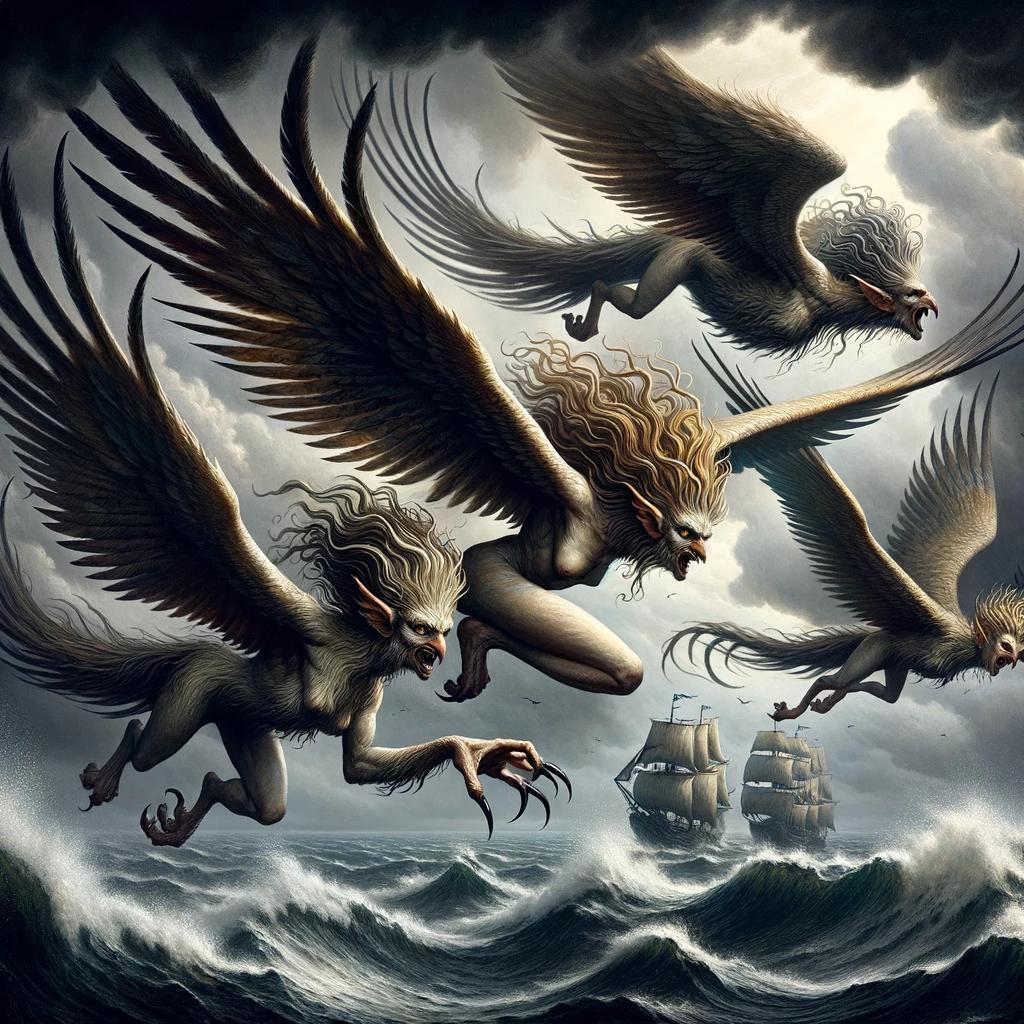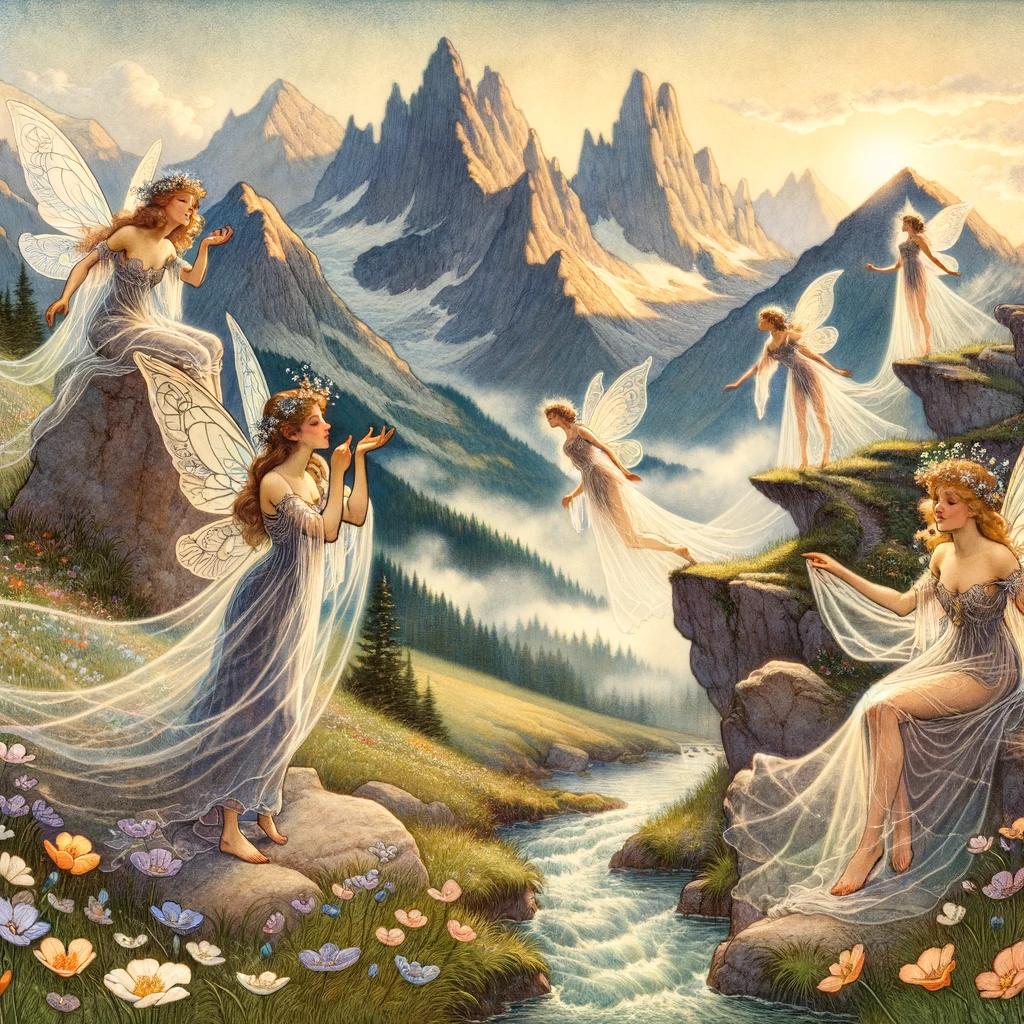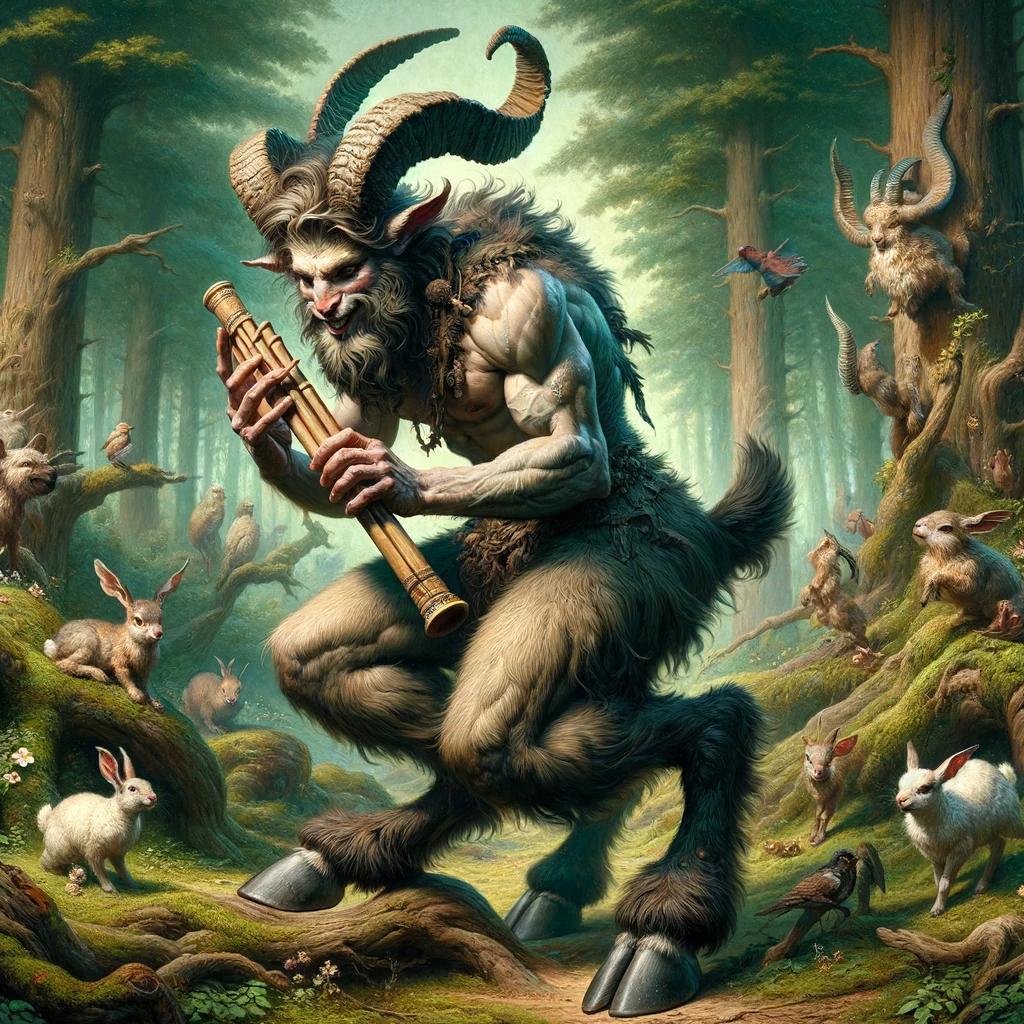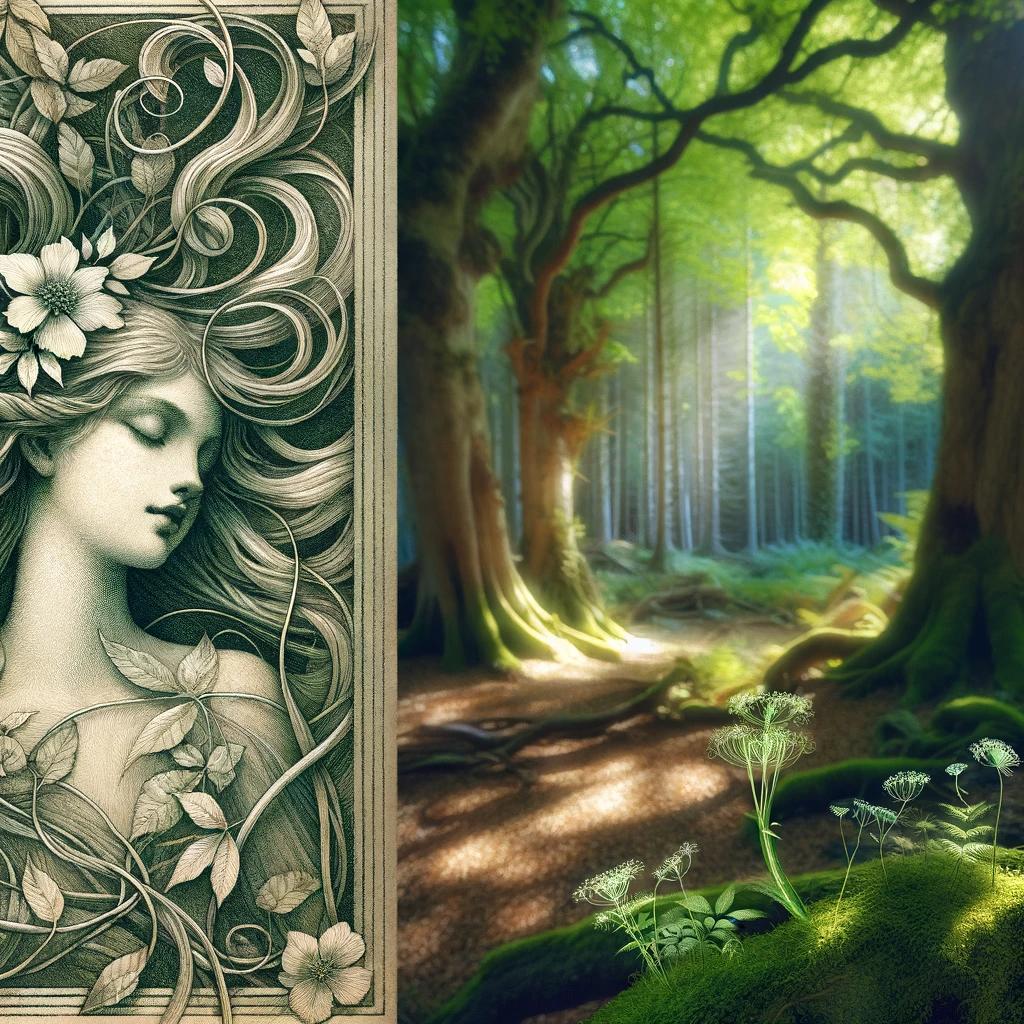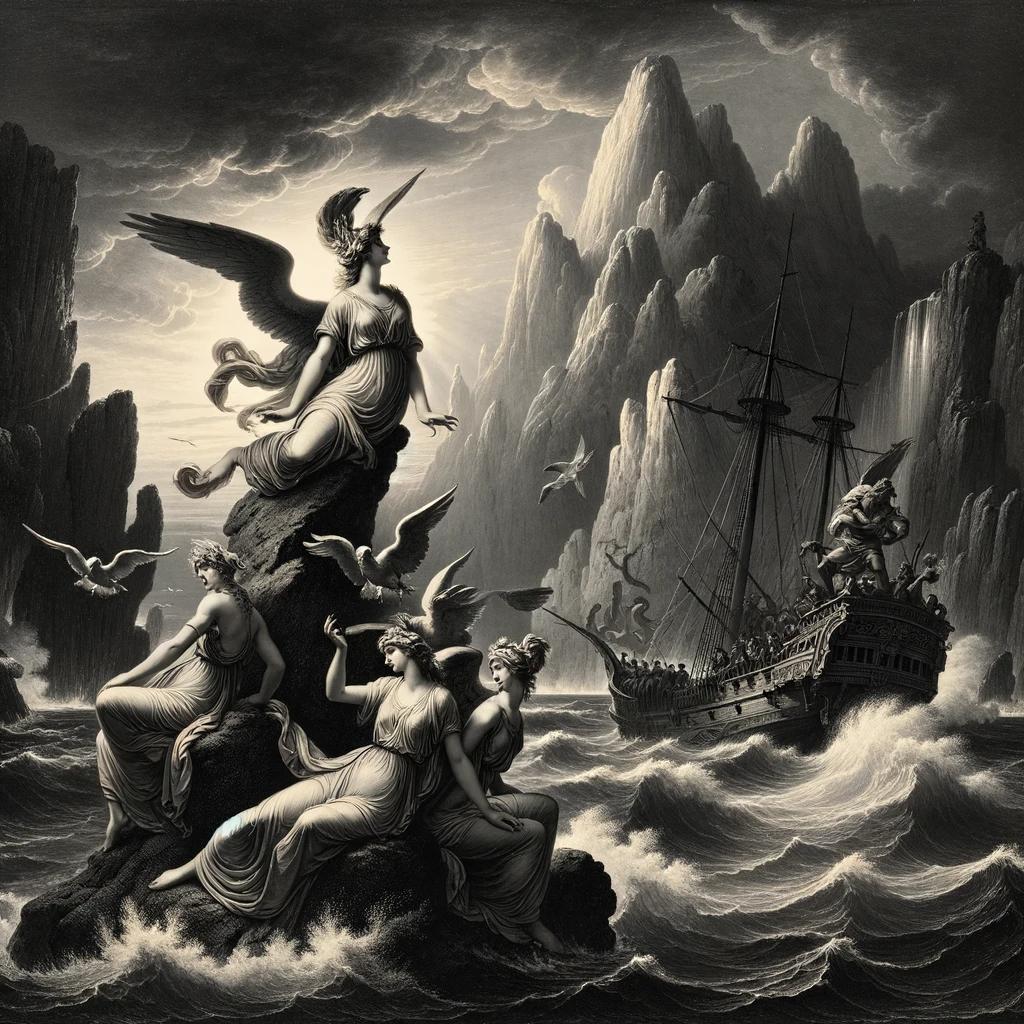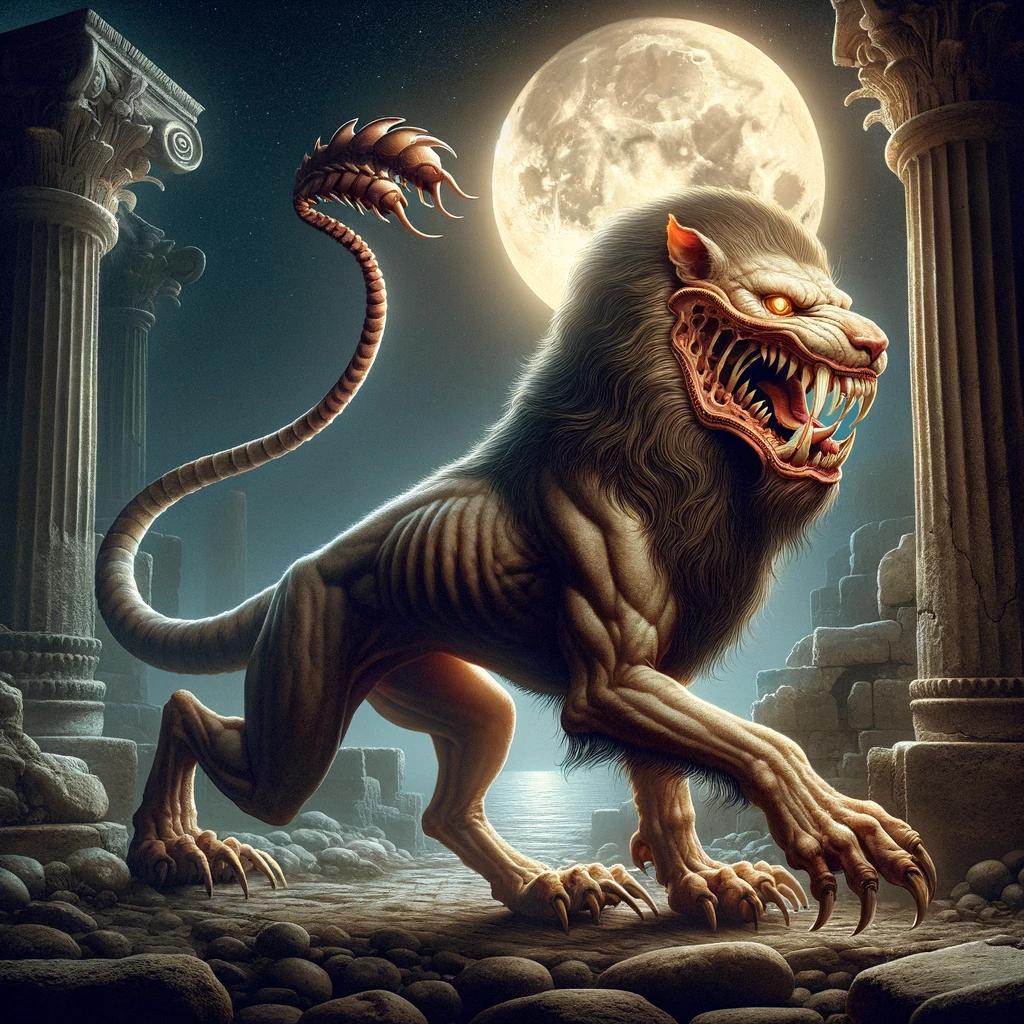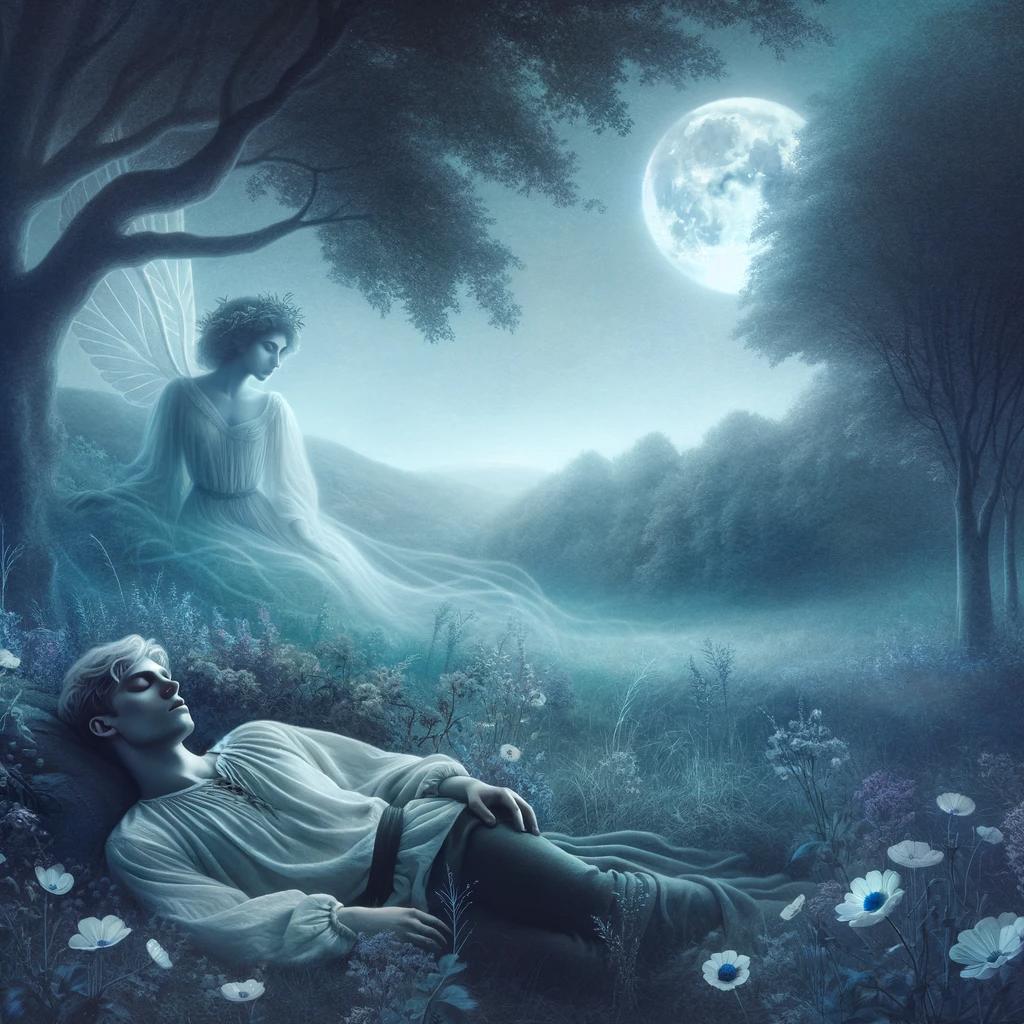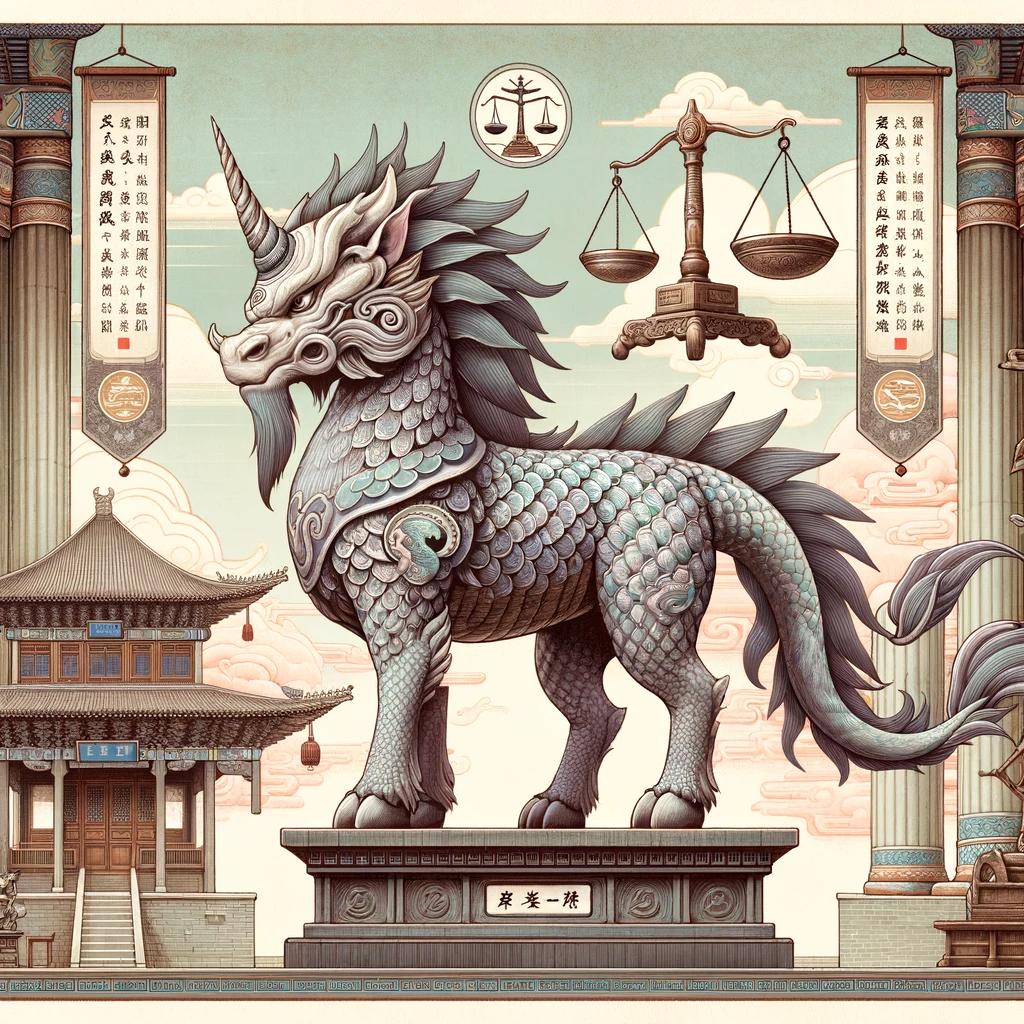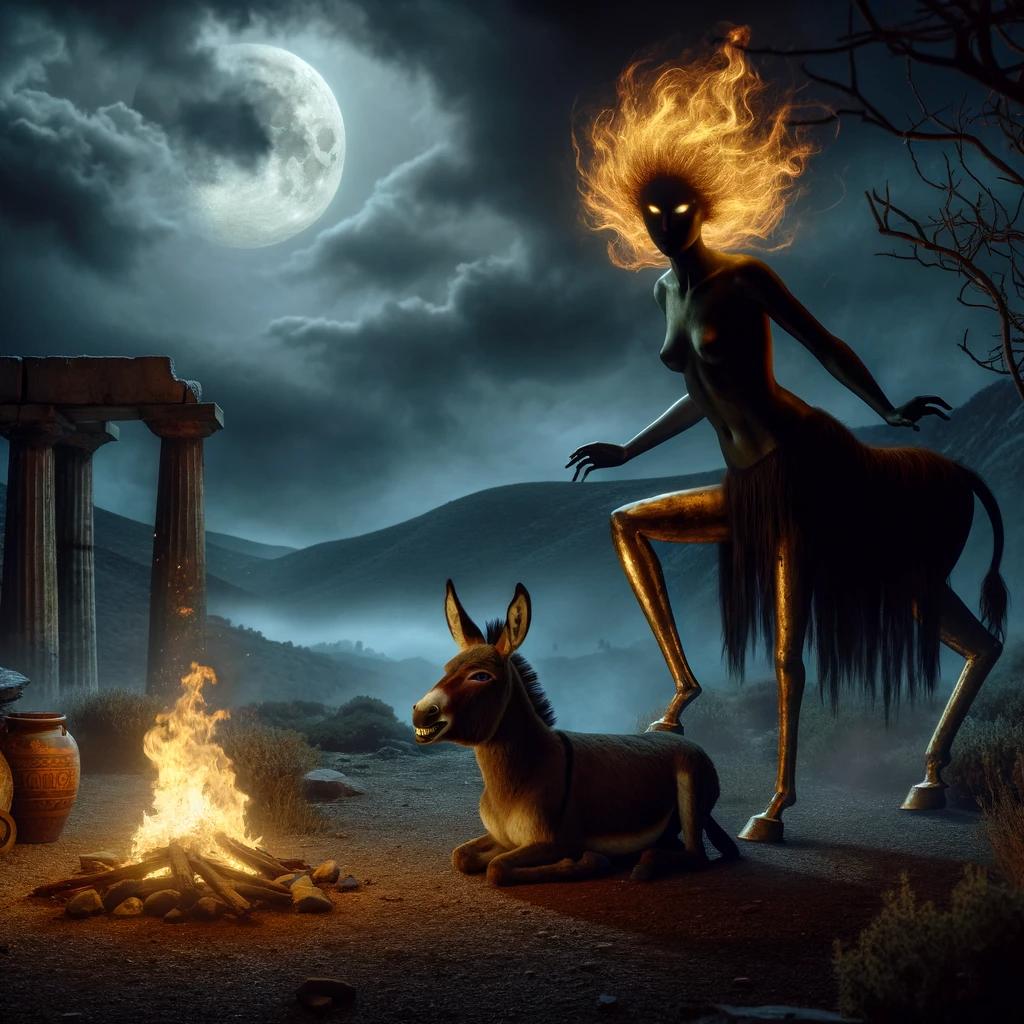The Harpies: Messengers of the Gods in Greek Mythology
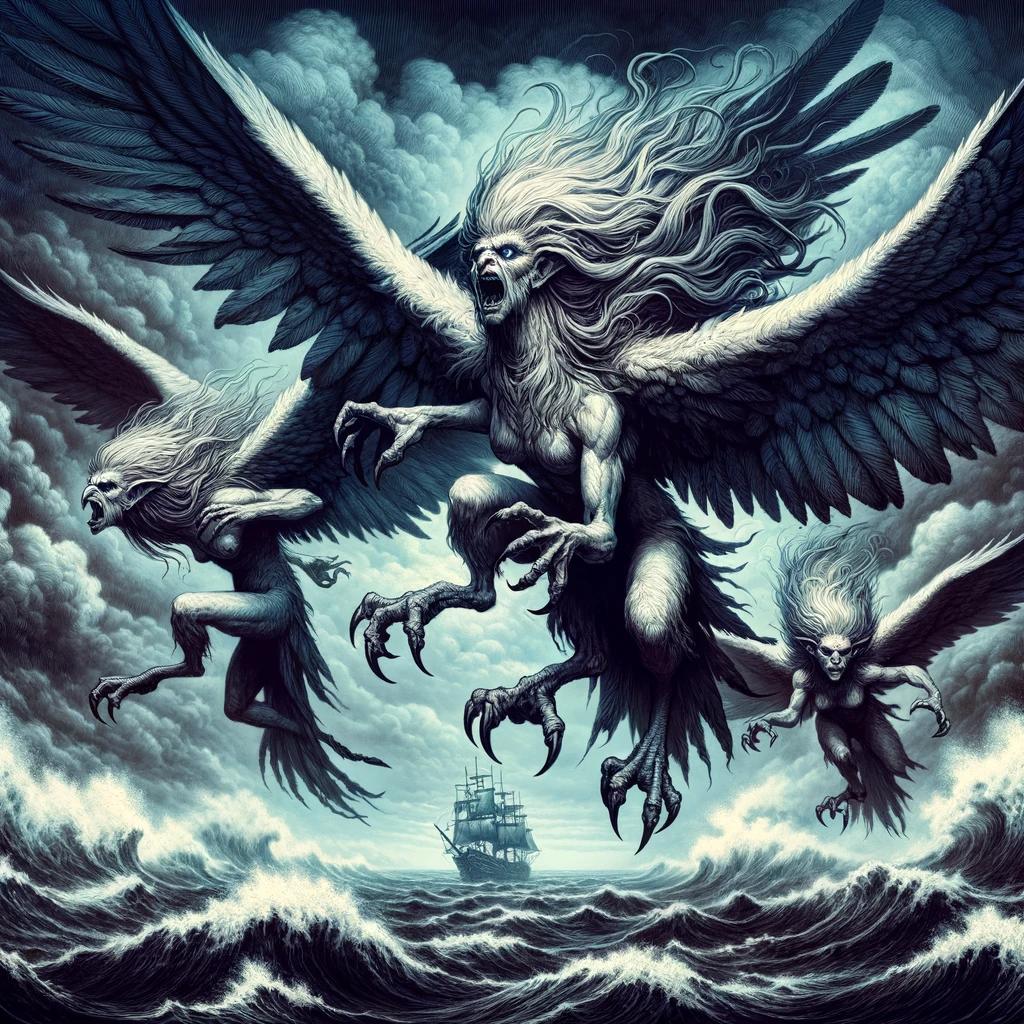
The Harpies, central figures in both Greek and Roman mythology, are mythical creatures described as half-woman, half-bird beings. Also known as “The Dogs of Zeus,” they were sent by the powerful god to carry out his commands, particularly during storms.
The Harpies symbolize stormy winds and were believed to be responsible for the disappearance of both people and objects. Various sources, including “The Iliad” and “The Theogony,” mention between one and four Harpies, with names like Aello, Okypete, Podarge, and Celaeno.
They played significant roles as messengers and enforcers in Greek literature, often associated with Zeus and violent winds. Their intriguing depictions have inspired art, literature, and popular media to this day.
The Origin and Nature of The Harpies
The Harpies, fascinating creatures from Greek mythology, captivate our imaginations with their enigmatic beginnings and the fascinating aspects of their being.
Different Versions of Their Origins
Various versions exist regarding the origins of the Harpies. Some sources suggest they are the daughters of Oceanus and Gaia, highlighting their connection to both the ocean and the earth.
Others attribute their parentage to Thaumas and Electra, with the poet Gaius Valerius Flaccus even claiming they are offspring of the monstrous Typhon.
These differing accounts, found in texts like Hesiod’s “Theogony,” add to the mysterious allure of the Harpies, linking them to the vast and complex family tree of Greek gods and goddesses.
Harpies as Creatures of Half-Woman, Half-Bird
The Harpies stand out as distinctive beings, embodying the mystical combination of both woman and bird. They possess the captivating allure of the feminine form intertwined with the formidable and majestic wings of birds.
This unique fusion of human and avian elements evokes a sense of wonder and mystery, making them one of the most visually compelling creatures in Greek mythology.
Their Role as Symbolic Representations
The Harpies hold significant symbolic value in Greek mythology.
They are often associated with stormy winds, personifying the turbulence and unpredictability of these natural phenomena. Their depiction as unruly winds carrying out Zeus’s commands during tempests highlights their connection to power and chaos.
Moreover, their responsibility for the disappearances of both people and objects emphasizes their enigmatic and capricious nature, showcasing the Harpies as symbols of divine punishment and the swift execution of Zeus’s will.
The Harpies in Ancient Greek Literature
The Harpies play a significant role in ancient Greek literature, appearing in various epic works and mythological texts. They are intriguing creatures that have fascinated poets and writers throughout history.
References to The Harpies in Hesiod’s Theogony
In Hesiod’s “Theogony,” a foundational work of Greek mythology that narrates the origins of the gods, two Harpies named Aello and Okypete are described as swift and cruel agents of Zeus.
Their role in enforcing the will of Zeus and their association with storms contribute to their portrayal as fearsome entities in Greek mythology.
The Harpies in Homer’s Odyssey
In Homer’s “Odyssey,” the epic tale of Odysseus’ journey home after the Trojan War, the Harpies are mentioned as winged spirits that snatch away and torment the souls of the dead.
This portrayal adds to the ominous and unsettling atmosphere of the Underworld, enhancing the epic’s exploration of the themes of fate and divine intervention.
Mention of The Harpy Podarge in Virgil’s Aeneid
Virgil’s “Aeneid,” which follows the adventures of Aeneas after the fall of Troy, includes a mention of a Harpy named Podarge. She is portrayed as a messenger of Juno, responsible for tormenting the Trojans by fouling their food.
This depiction showcases the Harpies’ role as enforcers of divine will and their ability to cause havoc and chaos.
Other Ancient Sources Depicting The Harpies
Apart from the aforementioned texts, the Harpies make appearances in other ancient sources as well. They are mentioned in non-literary works like vase paintings and sculptures, providing additional visual representations of these mythical creatures.
and Function of The Harpies
Introduction: Unveiling the Enigmatic Role of The Harpies
Harpies as Messengers and Enforcers of Zeus
The Harpies played a crucial role as messengers and enforcers of the mighty Zeus, the king of the gods. They were sent by Zeus to carry out his commands, particularly during storms and turbulent times.
Known as ‘The Dogs of Zeus,’ these mythical creatures obediently executed their divine duties, ensuring the fulfillment of Zeus’ will.
Their Association with Storms and Disappearances
One intriguing aspect of the Harpies’ role was their association with storms. These half-woman, half-bird beings iconically personified stormy winds, using their powerful wings to unleash chaos upon the world. Their presence often foretold impending tempests, and their eerie screeches echoed through the sky as they descended, stirring fear and awe in those who encountered them.
Notably, the Harpies were sometimes attributed to the mysterious disappearances of both individuals and objects. Ancient Greek mythology often portrayed them as harbingers of vanishing and loss, adding to their enigmatic nature and their connection to the realm of the unseen and unknown.
Harpies as the Personification of Violent Winds
A significant component of the Harpies’ role was their representation as the personification of violent winds. Their existence exemplified the raw power and might of nature’s forces, particularly in the form of furious gusts and tempestuous winds.
The Harpies symbolized the untamed ferocity and unpredictable nature of atmospheric disturbances, showcasing the overwhelming strength of the wind.
These supernatural beings embodied the essence of stormy gales, inspiring awe and apprehension among the ancient Greeks.
The mere mention of their name evoked visions of chaos and turmoil, reminding all of the uncontrollable forces that resided in the natural world.
In conclusion, the Harpies in Greek mythology held multiple roles and functions.
Serving as messengers and enforcers of Zeus, they carried out divine commands. They were associated with storms and mysterious disappearances, instilling fear and uncertainty. Additionally, their presence symbolized the sheer power and might of violent winds, reinforcing their status as formidable and awe-inspiring creatures of ancient Greek mythology.
Depictions and Descriptions of The Harpies
Physical Appearance and Characteristics
The Harpies were fascinating creatures with a unique blend of human and avian features. They were depicted as beings with the upper body of a woman and the lower body of a bird, typically including wings and sharp talons.
Their faces were often portrayed as either beautiful or terrifying, reflecting their duality of nature. The Harpies were known for their fast and agile flight, allowing them to swiftly fulfill their assigned tasks.
Symbolism and Meaning Behind Their Features
The depiction of the Harpies carried symbolic significance in Greek mythology. The combination of human and bird attributes symbolized the connection between the earthly and celestial realms. Their wings represented their association with the tumultuous winds and storms, showcasing their power and unpredictability.
The sharp talons embodied their ability to snatch and carry away people and objects, serving as a metaphor for the sudden and unexpected losses that storms could bring.
Artistic Representations and Sculptures of The Harpies
Throughout history, the Harpies have been a popular subject of artistic representation.
They were often depicted in ancient Greek pottery, sculptures, and paintings, where artists sought to capture their unique and mesmerizing appearance. These artistic depictions ranged from graceful and elegant interpretations to more menacing and fearsome portrayals.
The Harpies’ portrayal in art aimed to convey their role as both divine messengers and foreboding omens of storms and disappearance.
- Some notable representations include:
- The Harpy Tomb in Xanthos, which features a relief depicting a winged female figure in a dynamic flying position, illustrates the typical portrayal of Harpies in Greek mythology.
- The Harpy Monument, located in the Louvre Museum, showcases a sculpture of a Harpy carrying off a small figure, symbolizing their role as agents of abduction in the myths.
- Various ancient Greek vases and frescoes, where the Harpies are often portrayed in scenes related to their role as storm bringers or associated with famous mythological stories, such as their interactions with the hero Jason and the Argonauts.
Harpies in Greek Mythology: Legends and Stories
Famous Encounters with The Harpies
The Harpies, infamous for their terrifying presence, have left a mark in Greek mythology through their encounters with notable figures.
One of the most renowned tales involves the hero Jason and his Argonauts during their quest for the Golden Fleece.
As the crew traveled, they encountered the Harpies, who tormented Phineus, a blind prophet.
These intimidating creatures would swoop down and snatch away his food, causing him to starve. The arrival of the hero, Calais, and his brother, Zetes, who possessed wings, enabled them to drive away the Harpies, ending Phineus’ torment.
Another noteworthy encounter brings Apollo, the god of prophecy, into the story. In the epic poem the Argonautica by Apollonius of Rhodes, the Harpies are approached by the Argonauts seeking guidance.
Zetes and Calais, descendants of the wind gods, caught up with the Harpies, who begged for mercy and offered valuable information key to the Argonauts’ journey.
Significant Events Involving The Harpies
The Harpies played a crucial role in various significant events throughout Greek mythology.
One such event occurred during the legendary journey of the hero Aeneas, as described in Virgil’s Aeneid. The Harpy Celaeno prophesied the hardships Aeneas would face, including the famine they would endure before reaching their destined land in Italy.
Furthermore, the Harpies’ involvement in the epic poem The Odyssey is an essential event in Greek mythology. In Homer’s work, the Harpy Podarge is mentioned as one of the divine mares that Achilles owned, showcasing their connection to powerful and revered figures in ancient tales.
Impact and Influence on Greek Mythological Narratives
The presence of the Harpies in Greek mythology has had a significant impact on the overall narrative of ancient Greek tales. These mythical creatures, with their wild and untamable nature, represent chaos and destruction.
They serve as a warning to mortals, symbolizing the consequences of human hubris and disobedience towards the gods. The tales of the Harpies also add a sense of tension and suspense to the stories, captivating audiences for generations.
Artists and storytellers alike have drawn inspiration from the Harpies, incorporating their essence into various forms of art, literature, and popular media. Their portrayal continues to fascinate and intrigue, reminding us of the complex and rich world of Greek mythology.
The Harpies in Modern Culture
Modern culture has been greatly influenced by the fascinating legends and symbolism surrounding the Harpies in Greek mythology. From literature to art, movies, and popular media, these mystical creatures continue to captivate and inspire.
References to The Harpies in Contemporary Literature
In contemporary literature, the Harpies often make appearances as powerful and fearsome beings. Their role as enforcers of Zeus and their association with storms and disappearances provide a rich source of inspiration for authors.
Whether depicted as antagonists or mysterious forces of nature, the Harpies add depth and intrigue to many modern mythological tales.
The Harpies in Art, Movies, and Popular Media
The Harpies have also found their way into various art forms, movies, and popular media. Through stunning visual representations and CGI effects, these half-woman, half-bird creatures come to life on the big screen, captivating audiences with their mythical allure.
Artistic interpretations of the Harpies showcase their physical characteristics and convey the symbolism associated with these enigmatic beings. Furthermore, the Harpies have become iconic figures in video games, where players can encounter them as formidable opponents or allies in immersive virtual worlds.
Their inclusion in popular media serves as a testament to their enduring presence and appeal in modern culture.
Influence of The Harpies in Greek Mythology Today
The Harpies continue to hold significance in the realm of Greek mythology today. Their representation as personifications of violent winds reminds us of the power of nature and the forces beyond our control.
Moreover, the Harpies’ role as messengers and enforcers of Zeus highlights the intricacies of divine intervention and the consequences of defying the gods.
Additionally, the Harpies’ themes of disappearance and chaos resonate with contemporary societal fears and uncertainties.
They serve as a reminder of the ever-present unknown lurking around us, adding a touch of mystery and intrigue to our modern interpretation of ancient myths.
In conclusion, the Harpies’ presence in modern culture is a testament to the enduring fascination with Greek mythology and its profound impact on various art forms and popular media.
Their portrayal in contemporary literature, art, movies, and video games continues to captivate audiences and infuse a sense of wonder and awe into our modern world.
7. Frequently Asked Questions about The Harpies in Greek Mythology
Q: What are the Harpies in Greek mythology?
The Harpies are mythical creatures from ancient Greek mythology that are described as half-woman, half-bird beings.
They were known as ‘The Dogs of Zeus’ and represented stormy winds.
Q: How many Harpies were there?
There are different accounts regarding the number of Harpies. According to Hesiod’s Theogony, there are two named Harpies called Aello and Okypete.
In Homer’s Odyssey, one Harpy named Podarge is mentioned. Virgil’s Aeneid introduces a fourth Harpy, Celaeno.
Q: What is the origin of the Harpies?
While there are various versions of their origins, some sources mention that the Harpies are the daughters of Taumante and Electra. Other accounts suggest Océano and Tierra as their parents.
The Roman poet Gaius Valerius Flaccus suggests that they are the daughters of the monster Typhon.
Q: What role do the Harpies play in Greek mythology?
The Harpies were mainly associated with Zeus and were sent by him to carry out his commands during storms.
They were depicted as messengers and enforcers of Zeus, infamous for causing disappearances of people and objects.
Q: What do the Harpies symbolize?
The Harpies personified the violent winds and were often seen as symbols of chaos and destruction.
They were believed to create storms and bring turmoil in their wake.
Q: How are the Harpies depicted in ancient artwork?
In ancient artwork, the Harpies are shown as half-woman, half-bird creatures with fierce expressions, sharp claws, and wings.
They are often depicted tormenting or snatching away their victims, reflecting their role in causing havoc.
Q: Are the Harpies mentioned in any famous legends or stories?
Yes, the Harpies appear in several famous Greek myths and legends.
For example, they torment the seer Phineus in his quest for knowledge. They also feature in the adventures of the hero Jason and the Argonauts during their search for the Golden Fleece.
Q: How do the Harpies continue to influence modern culture?
The Harpies have made appearances in contemporary literature, art, movies, and popular media. Their depiction as mysterious and dangerous beings continues to capture the imagination of audiences today.
.

